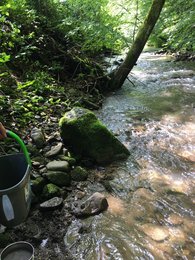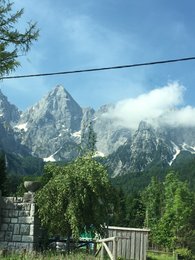Erosion and Quaternary Faulting in the Eastern Adriatic Zone | 4D-MB
In a group of geologists, geophysicists, and geochemists we study how erosion responds to active faulting using catchment-wide erosion rates. This project is part of the larger DFG-funded SPP “Mountain Building Processes in Four Dimensions (4D-MBB”). In the Eastern Southern Alps-Dinarides few moderate to strong earthquakes occurred in recent times, of which the 1976 Friuli earthquake sequence (MW 6.4, 5.9, and 6.0) is the most thoroughly investigated. Geomorphological terrain analysis and remote sensing produced first results of our collaborators (Diercks et al., 2023, Geomorphology), indicating that tracing active faulting in a slow-moving area with these methods is at its limits. Cosmogenic nuclide analysis has been shown (Densmore et al., 2009, Geology) to be sensitive to faulting, as higher-than-slope predicted erosion rates may indicate active faulting. Using a slope model as a simple prediction for erosion (Montgomery and Brandon, 2002, EPSL), low-slope areas have low erosion rates as these have not been subjected to faulting, while high slopes feature high erosion rates in catchments affected by faulting as a wave of incision moves through them. Using our novel 10Be(meteoric)/9Be denudation proxy, we can measure erosion rates in limestones regions. In such regions, applying the classic nuclide-mineral pair, i.e. 10Be(insitu) in quartz, often fails due to the lack of quartz. In Slovenia, however, extraction of quartz was possible. Comparison of both in situ and meteoric nuclides show good correlation.
Collaborators
- Dr. Christoph Grützner, Friedrich-Schiller-University Jena
- Prof. Kamil Ustazewski, Friedrich-Schiller-University Jena
- Prof. Klaus Reicherter, University Aachen
Funding
- DFG-SPP “Mountain BuildingProcesses in Four-Dimensions (4D-MB)”
Time Frame
- 2018 - 2022




